Pheidole desertorum Ants and Sagauro Cactus Fruit
The ludicrously beautiful sight of Pheidole desertorum ants eating bright red Saguar Cactus fruit
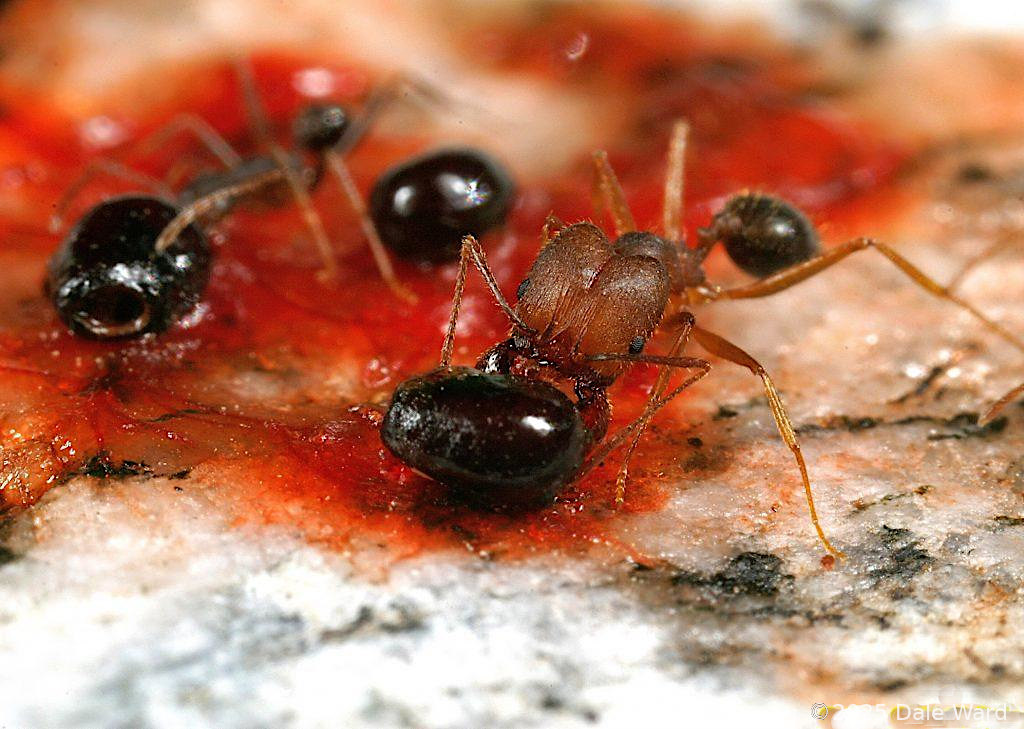 _Pheidole desertorum_ major worker and Saguaro Cactus seed. The red coloration on the rocks is from a fallen Sagauro fruit.
_Pheidole desertorum_ major worker and Saguaro Cactus seed. The red coloration on the rocks is from a fallen Sagauro fruit.
One of the strange things about the time we’re in now, this Time of Covid, is that we’re mostly locked down - there’s little to no travel. That means that people are doing things like going through old photos, mining their past for experience. Which is exactly what I’m doing now.
These photos are from a trip I made on July 4th, 2005, back when we lived in Tucson. This was a short trip into the foothills of the Santa Catalina Mountains. It was the same trip where I saw the Canyon Tree Frog tadpoles mentioned in this post.
After I found the pool containing the tadpoles, I continued up the canyon. I found a spot where a fleshy, red fruit had fallen on the smooth rock of the canyon bottom, then shattered into a mess of juice, red flesh and black seeds. It was a ripe Saguaro Cactus fruit that had fallen from the cacti growing on the rocky slopes around the canyon.
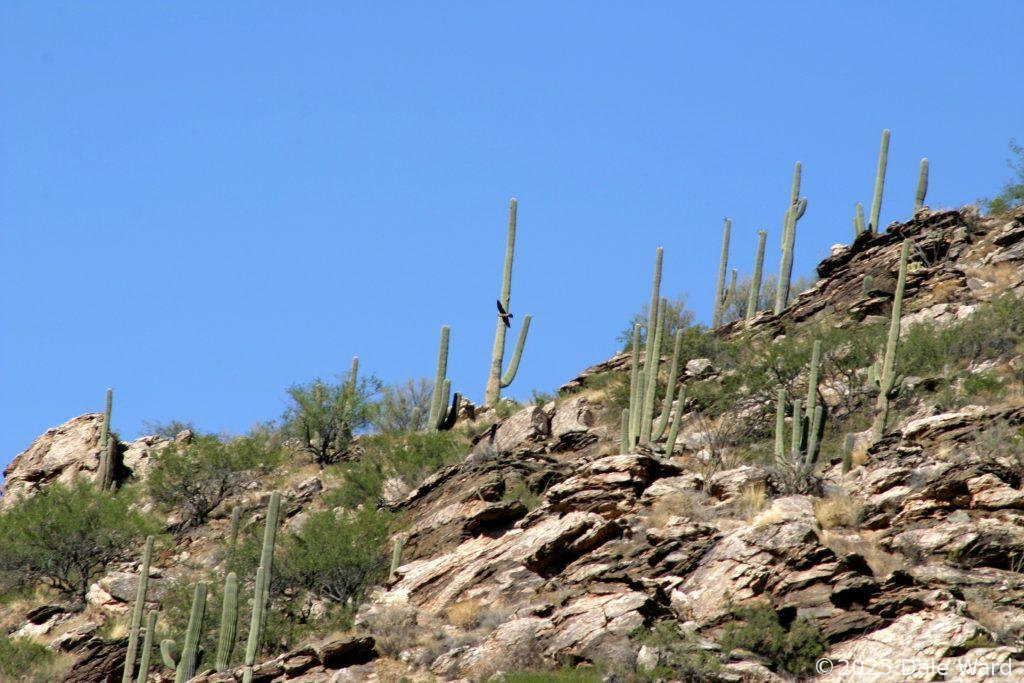 Sonoran Desert surrounding Wasp Canyon. This is a strange ‘scenery picture’ because I was actually trying to get a shot of the flying Redtail, near the center of the picture…
Sonoran Desert surrounding Wasp Canyon. This is a strange ‘scenery picture’ because I was actually trying to get a shot of the flying Redtail, near the center of the picture…
I looked closer - the smear of the ripe red fruit was covered in ants - Pheidole ants, to be precise! Yes, you guessed it - another of my favorite ant genera!
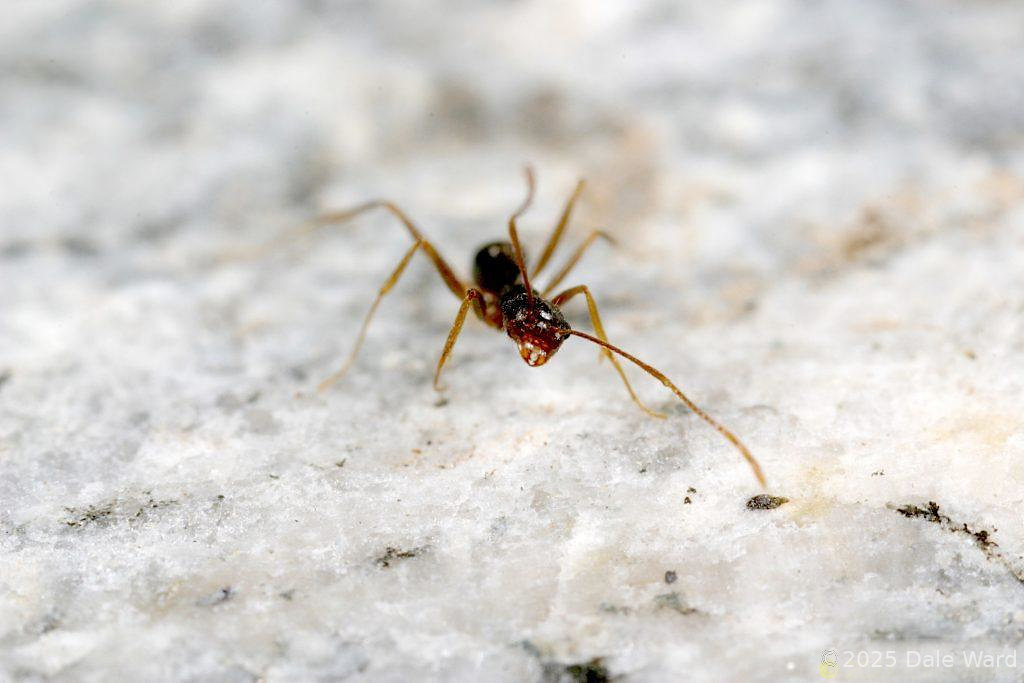 _Pheidole desrtorum_ minor worker looking into the camera. I love how long and attenuated her antennae and legs are, the faceted bulge of her compound eyes, and how aware of me she seems to be.
_Pheidole desrtorum_ minor worker looking into the camera. I love how long and attenuated her antennae and legs are, the faceted bulge of her compound eyes, and how aware of me she seems to be.
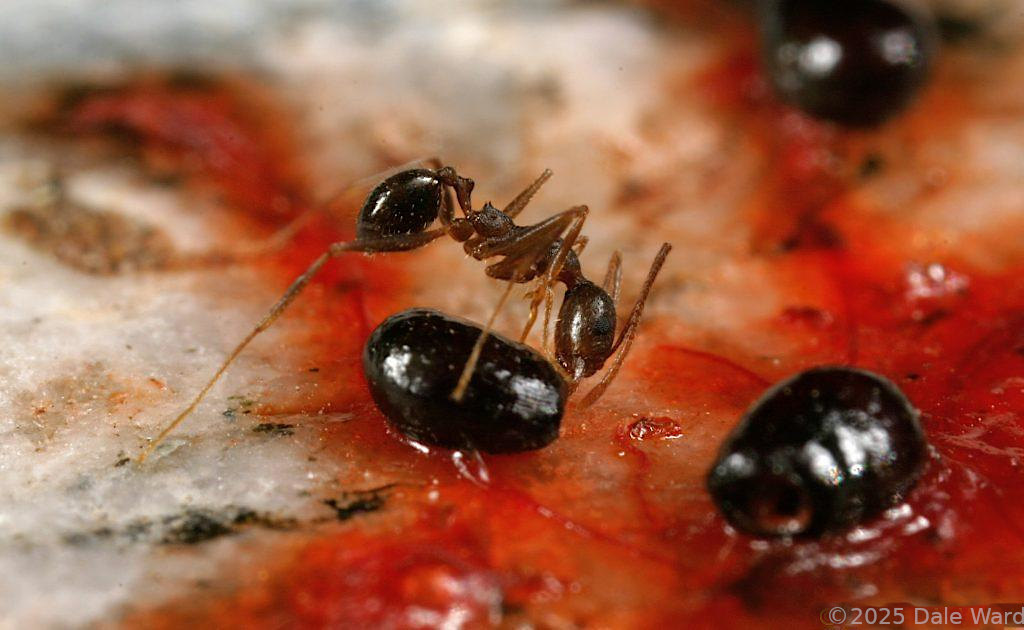 _Pheidole desertorum_ minor worker on a Saguaro Cactus seed
_Pheidole desertorum_ minor worker on a Saguaro Cactus seed
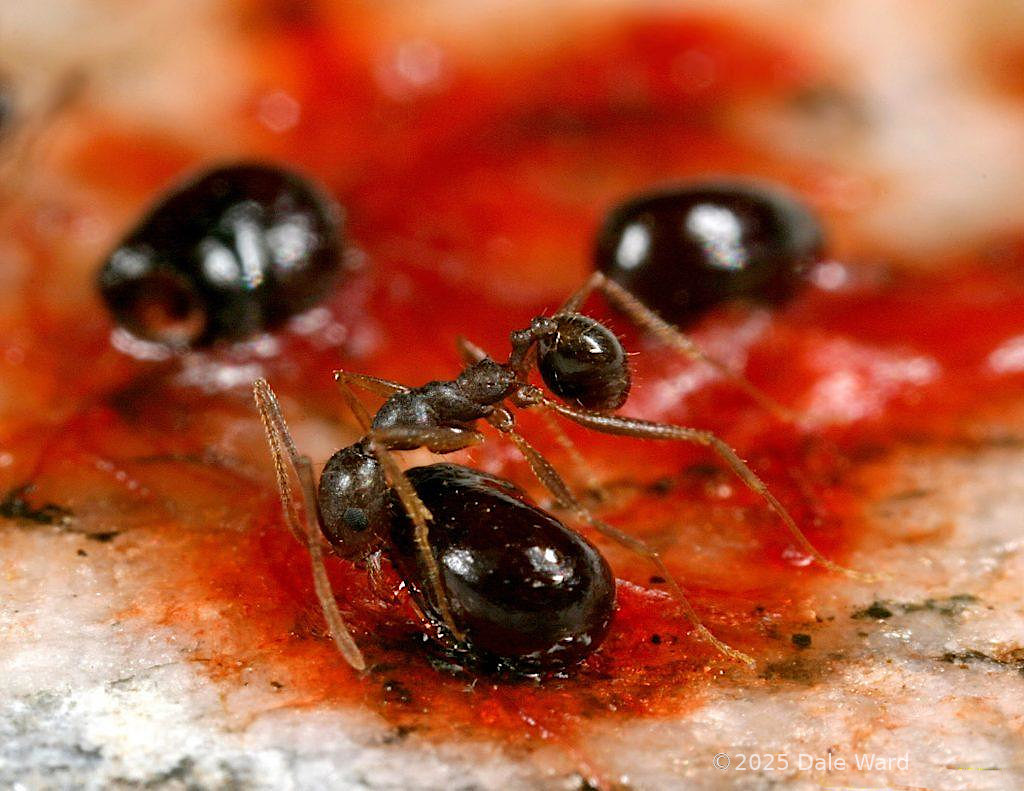 _Pheidole desertorum_ minor worker on a Saguaro Cactus seed
_Pheidole desertorum_ minor worker on a Saguaro Cactus seed
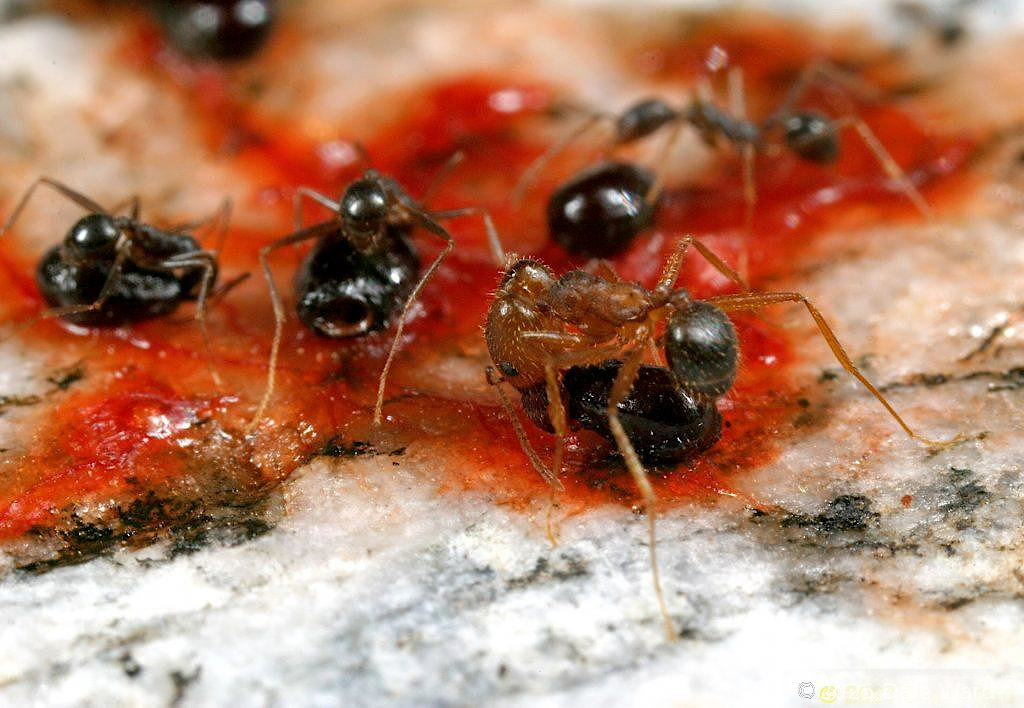 _Pheidole desertorum_ major and minor workers with Saguaro Cactus seeds
_Pheidole desertorum_ major and minor workers with Saguaro Cactus seeds
One of the interesting things that I noticed about the ants was that they mostly seemed to be paying attention to the Saguaro Cactus seeds. That was interesting because the juice and fleshy fruit of Saguaro Cactus are very sweet, almost like a syrup. There must have been something about the seeds themselves that was at least as appealing as the sugary fruit syrup, and probably more so.
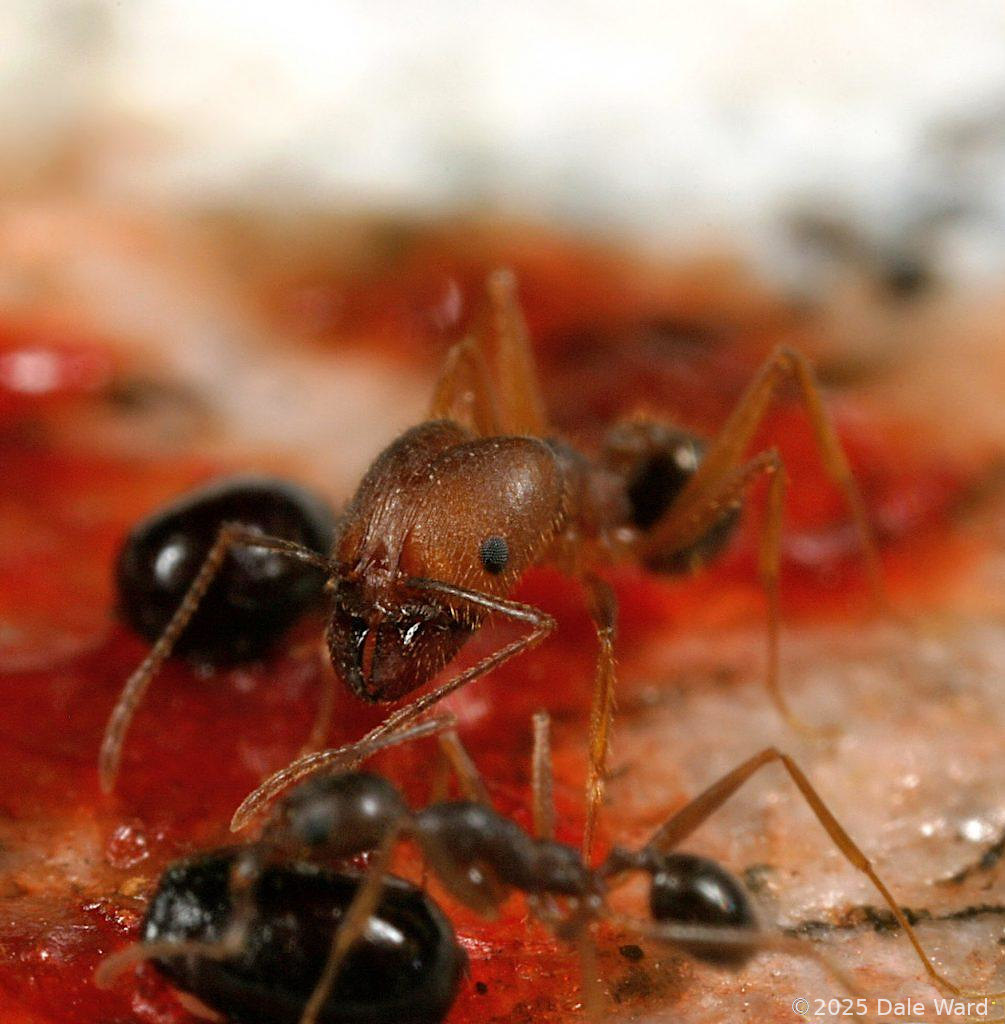 _Pheidole desertorum_ major and minor workers on a Saguaro Cactus seed
_Pheidole desertorum_ major and minor workers on a Saguaro Cactus seed
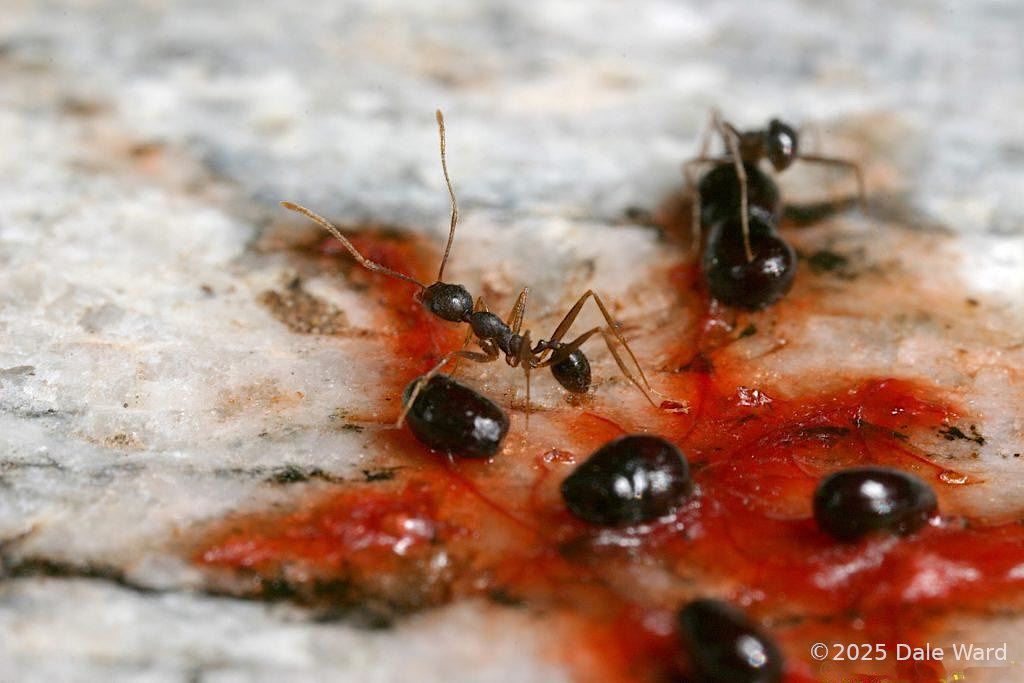 _Pheidole desertorum_ minor workers and Saguaro Cactus seeds.. Look how long the scapes of her antennae are.
_Pheidole desertorum_ minor workers and Saguaro Cactus seeds.. Look how long the scapes of her antennae are.
I don’t know why the ants were so interested in the seeds. Pheidole desertorum is supposedly at least partially a seed harvester, so perhaps that’s what the ants were up to…they were thinking about trying to move the seeds.
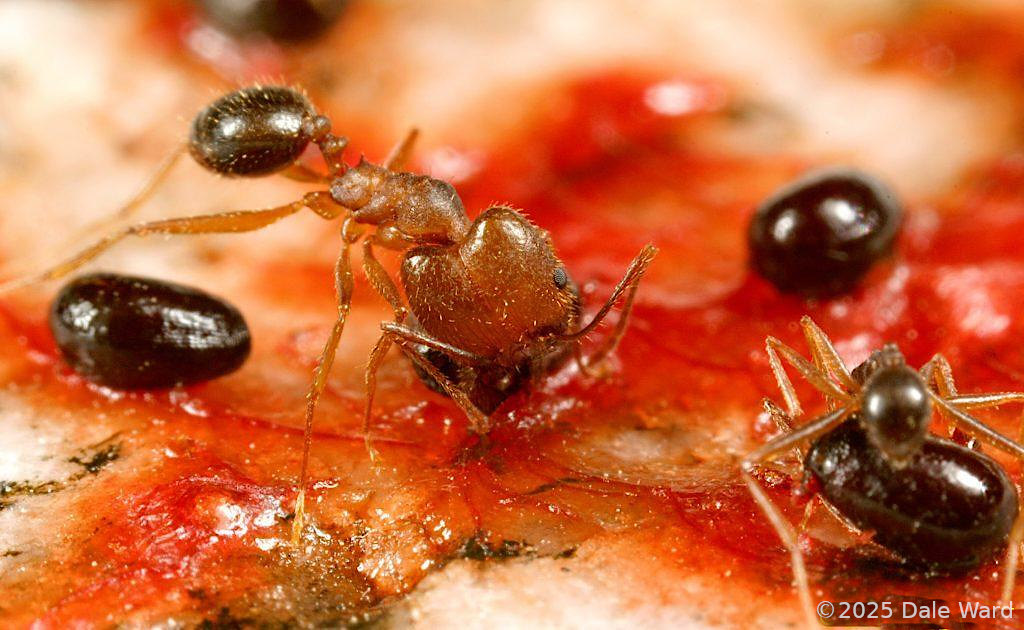 _Pheidole desrtorum_ major worker and Saguaro Cactus seed
_Pheidole desrtorum_ major worker and Saguaro Cactus seed
But I don’t think that’s what was going on, since I didn’t see the ants actually trying to move the seeds at all. Rather, they seemed to be be just licking or gnawing on the ends of the seeds. And usually when ants try to move large objects, a number of ants would work on the same object.
I wondered if there was some attractant on the seeds themselves. Some seeds have things called ‘elaiosomes’. These are fleshy appendages on the seed that are rich in lipids and proteins, and the elaiosomes are extremely attractive to ants. The ants end up carrying the elaisosomes, and incidentally the seeds themselves away from the parent plant, sometimes to the ant nest, sometimes to an ant midden. After they’ve eating the elaiosame, they discard the seed - which germinates and grows in its new location. The process is called ‘myrmechchory’.
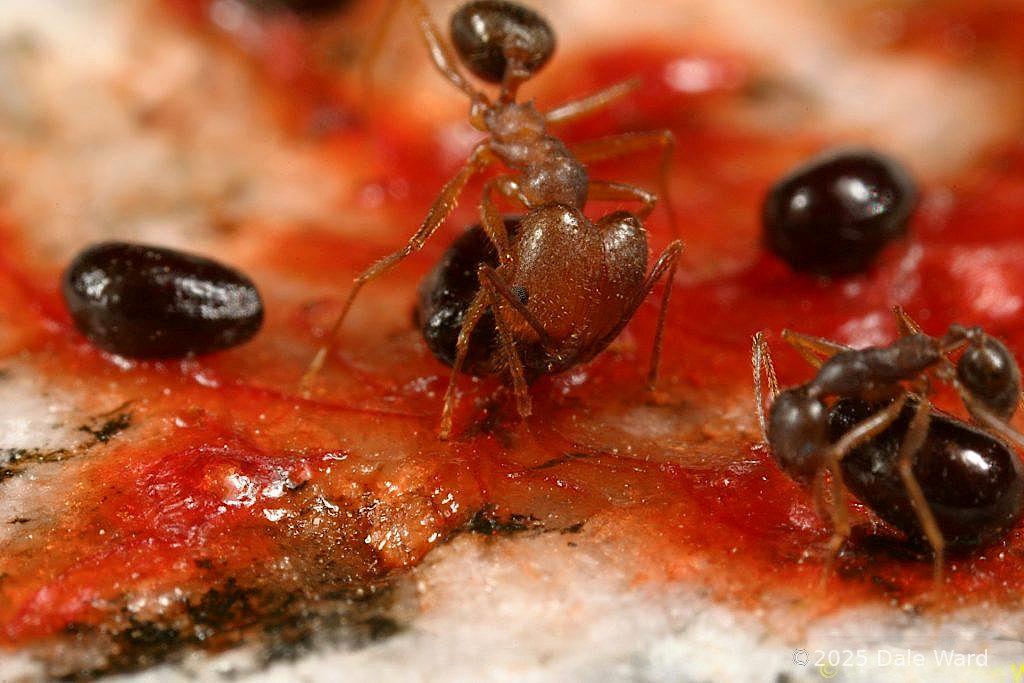 Major worker of _Pheidole desertorum_ and Saguaro Cactus seed.
Major worker of _Pheidole desertorum_ and Saguaro Cactus seed.
I did not see an obvious elaiosome on the Saguaro seeds. But given how fascinated the ants seemed to be with the ends of the seeds, I wonder if the seeds have elaiosomes that I didn’t notice, or if there was an olfactory equivalent of an elaiosome on the end of the seed.
 Pheidole desertorum major worker and Saguaro Cactus seed. The red coloration on the rocks is from the fluid from the Sagauro fruit.
Pheidole desertorum major worker and Saguaro Cactus seed. The red coloration on the rocks is from the fluid from the Sagauro fruit.
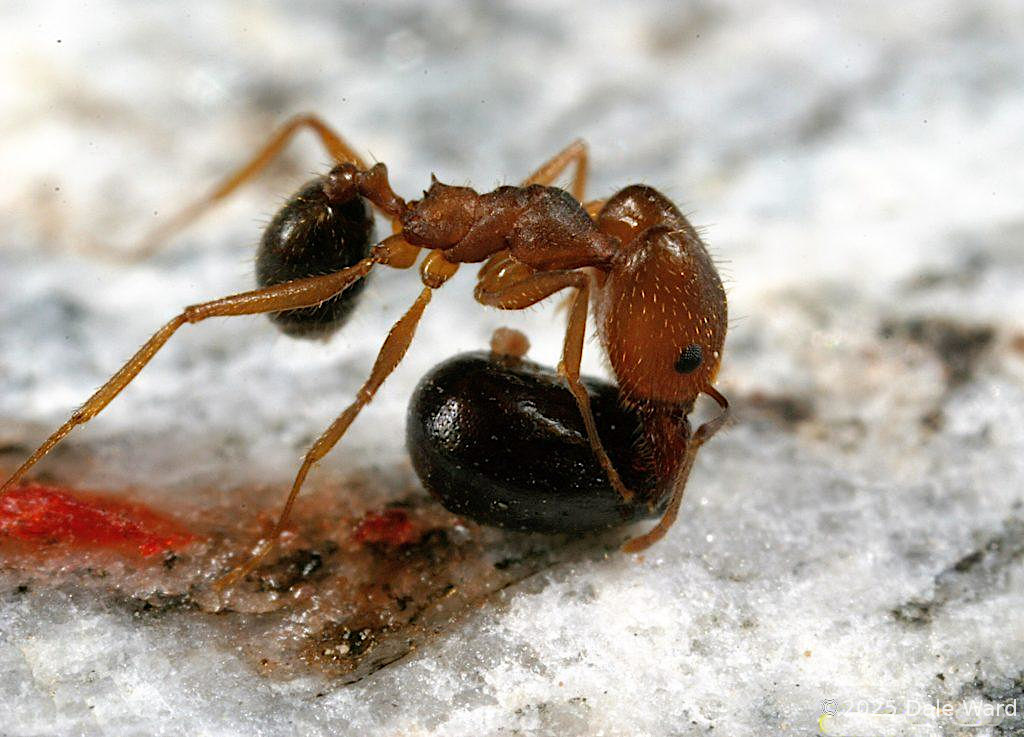 _Pheidole desrtorum_ major worker and Saguaro Cactus seed. Note how the seed seems to be on the end of a trail of juice - had the major been successful at dragging the seed? Maybe - but while I was there, I didn’t see obvious attempts for the ants to drag the seeds.
_Pheidole desrtorum_ major worker and Saguaro Cactus seed. Note how the seed seems to be on the end of a trail of juice - had the major been successful at dragging the seed? Maybe - but while I was there, I didn’t see obvious attempts for the ants to drag the seeds.
I’ve not read anything about ants distributing Saguaro seeds. They are usually just listed as predators on cactus seeds. But I still wonder if the situation is not more complicated than simple seed predation, and if the cacti are essentially paying the ants to disperse their seeds.
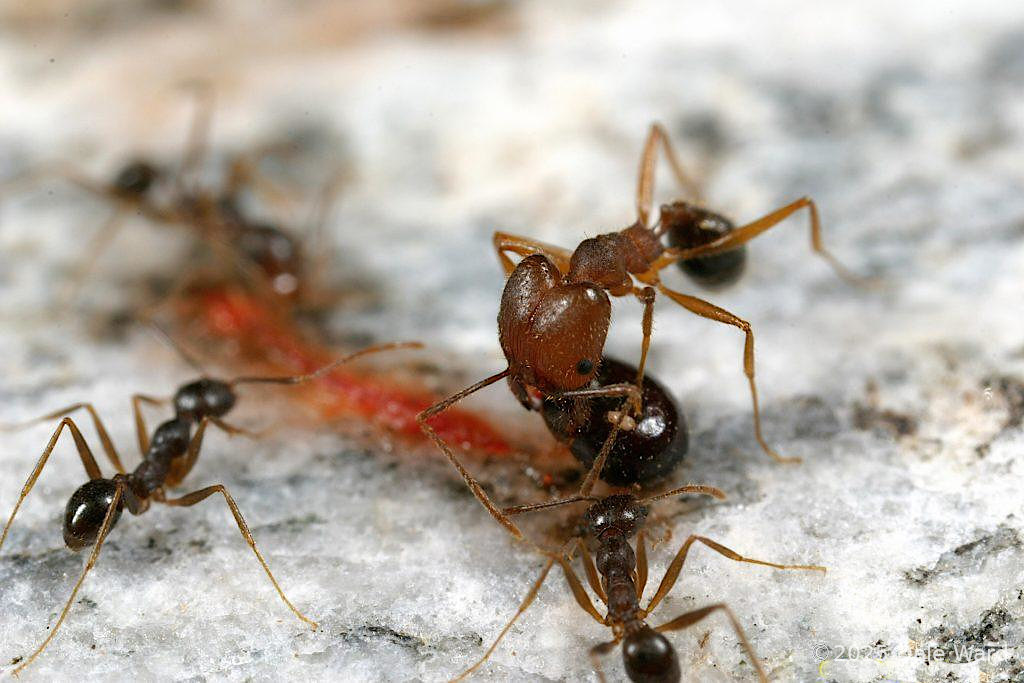 Pheidole desertorum major and minor workers with Saguaro Cactus seed
Pheidole desertorum major and minor workers with Saguaro Cactus seed
I watched these ants for about 30 minutes or so, marveling at the complex beauty of it.
Then I packed up my camera and headed further up the canyon.